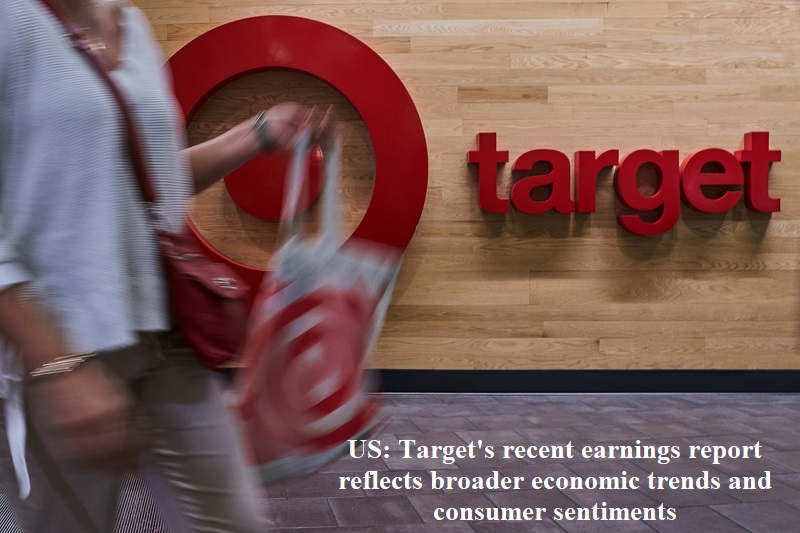
Target’s most recent earnings report provides valuable insights into the prevailing conditions of the American economy and consumer patterns. The retail giant’s performance offers a window into what items people are purchasing and where sales are surging, revealing broader economic trends and consumer sentiments.
KEY HIGHLIGHTS FROM TARGET’S EARNINGS REPORT
Earnings per share: $1.80
Revenue: $24.77 billion
Despite falling short of quarterly sales projections and revising down its full-year outlook, Target’s earnings report furnishes a nuanced understanding of the intricate dynamics at play within the American economy.
UNVEILING CONSUMER SPENDING TRENDS THROUGH TARGET’S EARNINGS
Consumers curbing expenditures on non-essential items
Indications of cautious consumer spending habits
Shifting focus toward essential purchases
Decreased sales of impulsive buys
Target’s robust performance in specific categories underscores the evolving priorities of consumers. The retailer’s challenges in enticing customers to spend on non-essential items mirror a larger trend of circumspect consumer behavior.
Target’s CEO, Brian Cornell, highlighted the obstacles consumers face, including rising interest rates, resuming student loan payments, and elevated prices of everyday necessities. He noted, “Given the consumer landscape today, we understand that consumers are grappling with the inflationary pressures affecting food, beverages, and essential household items.”
The inclination toward necessities becomes evident in Target’s range of products and sales trends. While sales of discretionary and impulse-driven items are dwindling, segments like groceries and essential household goods exhibit resilience. Groceries form a smaller proportion of Target’s revenue compared to Walmart, underscoring Target’s reliance on other product categories. This shift aligns with consumers prioritizing essential needs over mere wants, directing their disposable income towards indispensable items rather than leisurely purchases.
Target’s strategic pivots and accomplishments also offer insights into shifting consumer preferences. The company’s pivot towards high-frequency categories like groceries and essential household goods demonstrates its adaptability to consumer demands. The growth observed in these sectors has offset the decline in discretionary categories, indicating a deliberate focus on addressing fundamental needs amid economic uncertainties.
The collaboration with Ulta Beauty and the surge in beauty product sales point toward consumers’ ongoing interest in self-care and personal gratification. Sales of vibrantly colored tumblers, merchandise inspired by Barbie, and exclusive vinyl records underscore the enduring allure of nostalgic and distinctive products. This inclination indicates that consumers are willing to invest in items that provide them comfort, happiness, and a medium for self-expression.
The partnership with Ulta Beauty underscores the transforming landscape of retail, where specialized collaborations enhance the shopping experience and tap into diverse consumer inclinations. This approach resonates with consumers’ desire for personalized and meaningful acquisitions, a strategy that can alleviate the impact of economic unpredictability.
In conclusion, Target’s recent earnings report offers an intricate view into the current economic climate and consumer behavior in the United States. The company’s efforts to stimulate spending on non-essential items underscore the influence of inflation and economic uncertainty on consumer decisions. However, the success of particular product segments, strategic alliances, and a focus on affordability underscore consumers’ evolving preferences and their yearning for both indispensable commodities and purposeful indulgences.

Post Your Comments